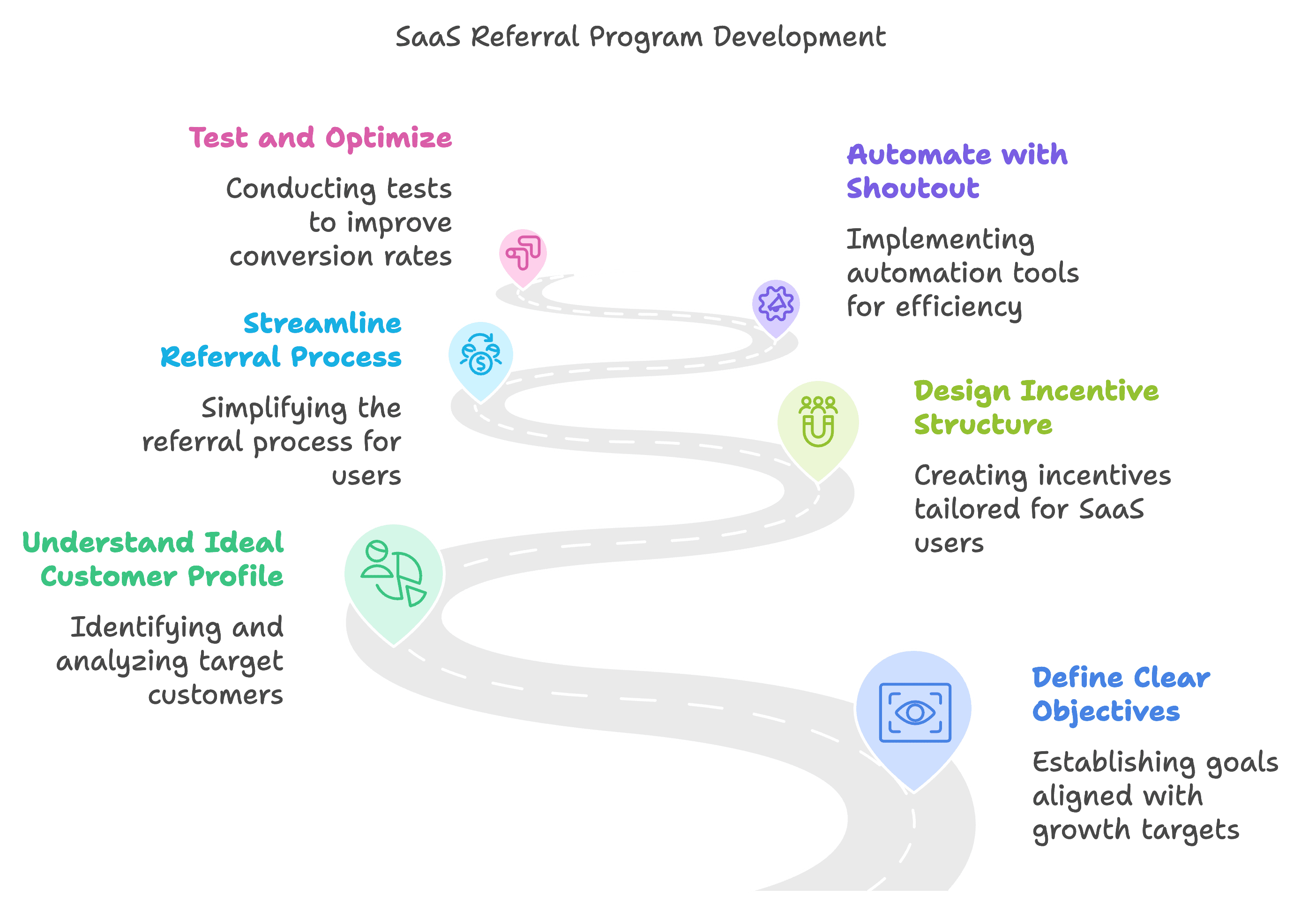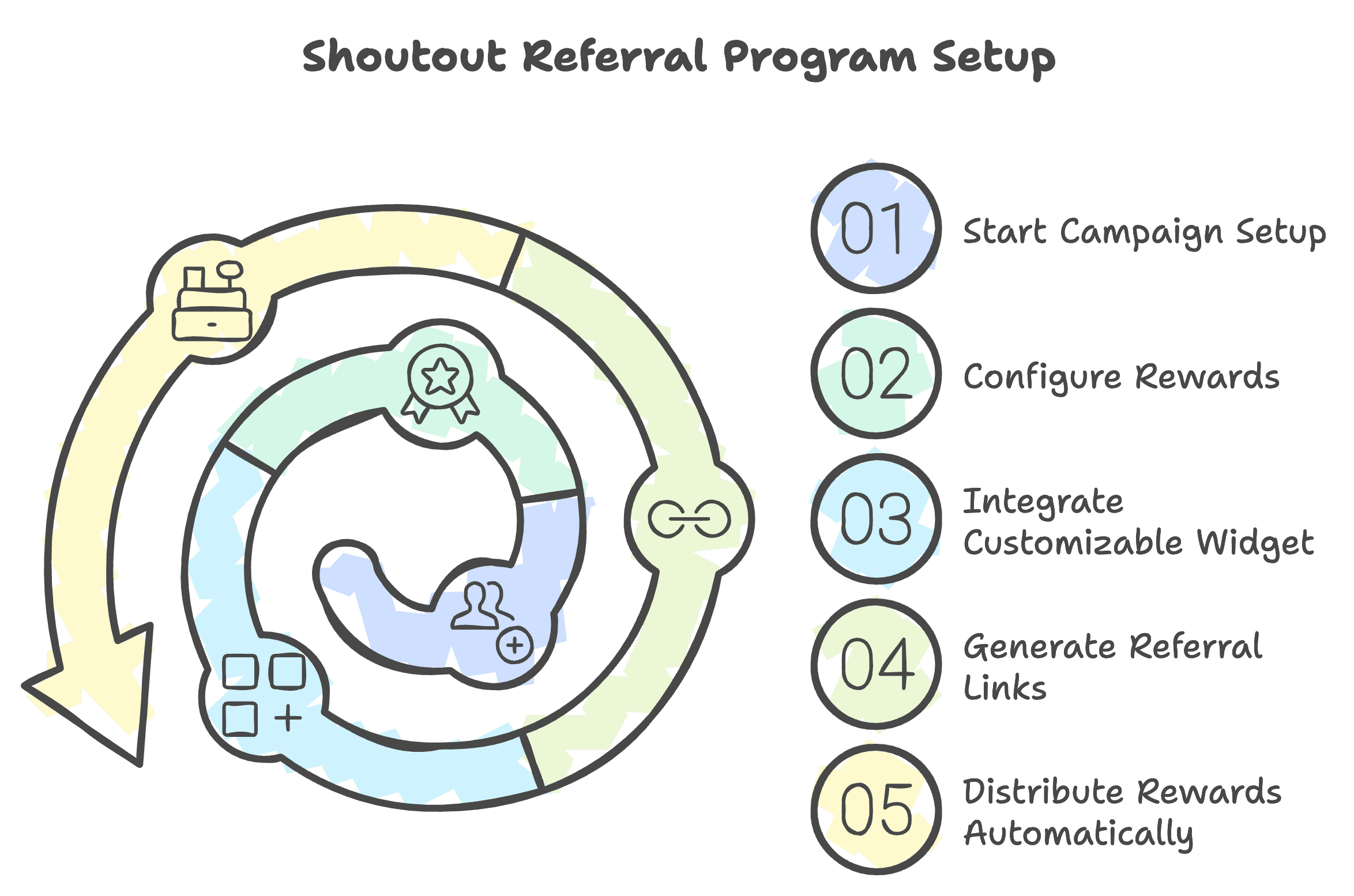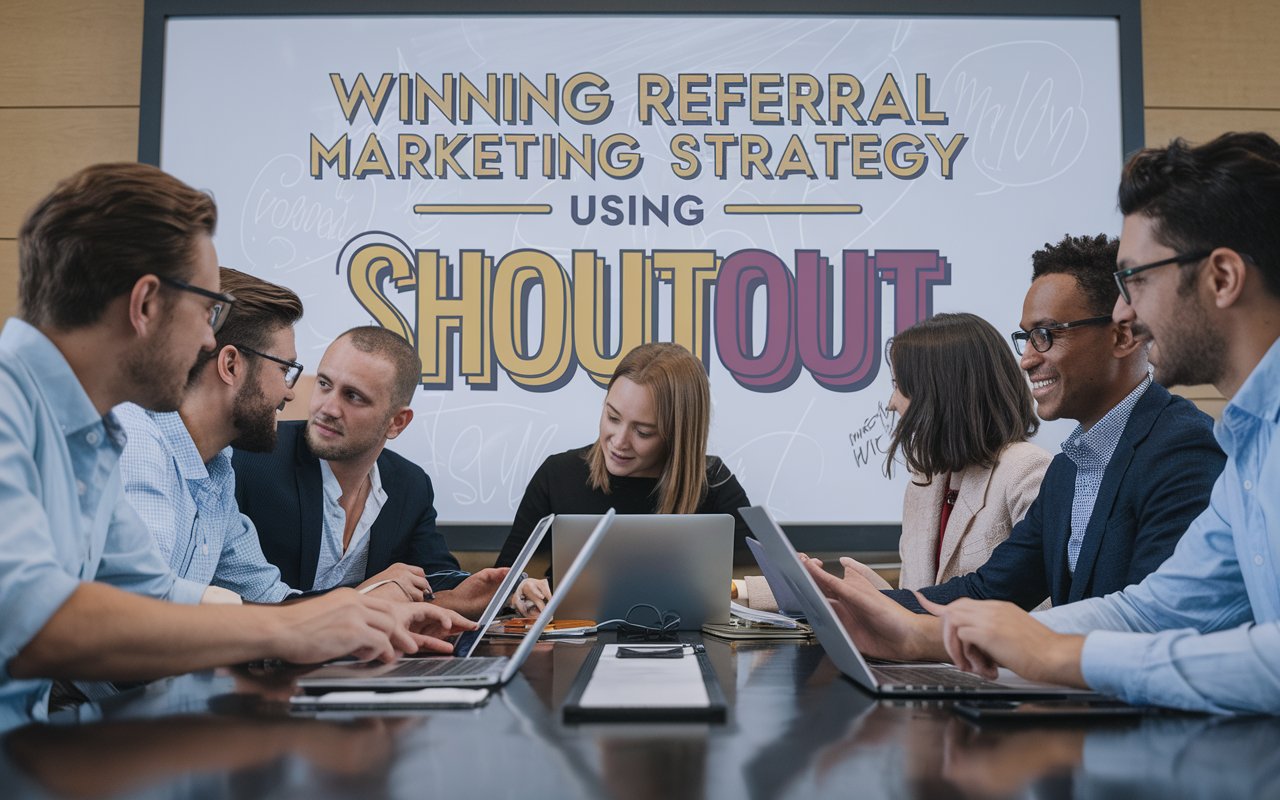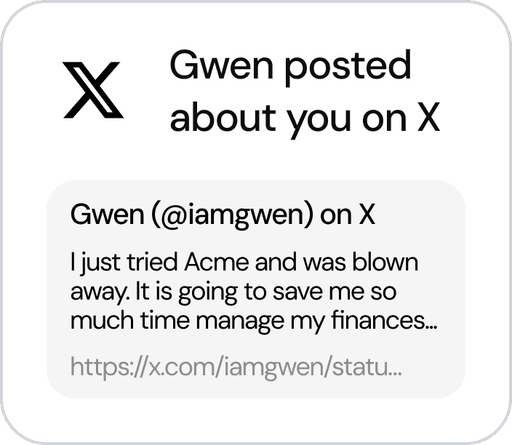Nov 9, 2024
Introduction
Referral marketing is an essential growth strategy for SaaS companies. With customer acquisition costs (CAC) rising in the competitive SaaS landscape, referral programs provide a sustainable way to grow by leveraging the loyalty of satisfied customers. Research shows that 92% of consumers trust referrals from people they know, making them a more effective source of new users than traditional advertising (source)
A well-structured referral program can reduce CAC, increase monthly recurring revenue (MRR), and improve customer lifetime value (CLV)—all critical metrics for SaaS companies. Let’s look at the step by step guide on how you can create a successful referral program that supports SaaS companies:

Step 1 – Define Clear Objectives Aligned with SaaS Growth Goals
Setting defined objectives is the foundation of a successful referral program. For SaaS companies, these objectives should align with key growth metrics, including reducing CAC, boosting MRR, and increasing CLV. Here’s how to start:
Focus on key SaaS metrics: Referral programs should contribute to essential SaaS metrics like CAC, MRR, and CLV. For example, SaaS companies with referral programs have seen reductions in CAC by up to 30%, highlighting the efficiency of referrals in generating cost-effective leads (source).
Identify the program’s primary goal: Defining the program’s main objective—whether it’s increasing sign-ups, converting free trials, or reducing churn—ensures that referral incentives and messaging directly support the goal.
Step 2 – Understand Your Ideal SaaS Customer Profile
For a referral program to be effective, it’s essential to know who your best referrers and target users are. This requires a deep understanding of your current customer base and the types of users most likely to convert through referrals.
Define Your Target User: High-LTV (lifetime value) customers are typically the most valuable in SaaS. Studies show that focusing on power users or long-term customers can significantly increase referral rates (source).
Tailor Referral Campaigns for Different User Segments: Segmenting your audience allows you to tailor incentives to different customer groups. For instance, some SaaS tools find that enterprise customers are more motivated by rewards like product upgrades, while small businesses may respond better to discounts on subscription renewals. Segmenting in this way has been shown to boost referral program participation rates by 20% (source).
Step 3 – Design SaaS-Specific Incentive Structure
A compelling incentive structure is essential for driving participation in referral programs. For SaaS companies, incentives should align with subscription-based models and encourage both referrers and new users to engage.
Types of SaaS-Friendly Incentives: Incentives commonly used by SaaS companies include extended free trials, credits toward future payments, and product upgrades. For example, Evernote offered additional storage as a referral reward, allowing users to increase their monthly storage limit. This program incentivized referrals without adding cash expenses and aligned with Evernote’s goal of keeping users engaged in the product (source).
Single vs. Double-Sided Rewards: Research shows that double-sided rewards, where both referrers and new users receive benefits, increase program participation by an average of 40% (source). Dropbox’s classic “give storage, get storage” program is a prime example of this, as it provided value to both the referrer and the referred, leading to a 3,900% user growth rate within 15 months (source).
Step 4 – Streamline the Referral Process for SaaS Users
To ensure that SaaS users participate actively, the referral process must be straightforward and seamlessly integrated within the product. Reducing friction in the referral flow significantly improves participation rates.
Create a Seamless Referral Flow: For optimal engagement, make the referral option accessible within your product’s interface. This approach works well for Notion, where users can easily access referral options within their dashboard, encouraging a natural, low-effort referral process.
Use Product Integrations for Easy Sharing: Embedding referral options within the SaaS interface allows users to share with minimal effort. Grammarly includes an in-app referral program accessible from the user dashboard. By allowing users to refer directly through the app, Grammarly achieved an increase in program participation without requiring users to leave the platform (source).
Step 5 – Automate the Referral Program with Shoutout

For SaaS companies, automating a referral program is crucial for maximizing efficiency and impact. Shoutout is designed to handle the full spectrum of referral campaign automation, from tracking referrals to distributing rewards. By enabling complete automation, Shoutout ensures that SaaS companies can build, manage, and grow referral programs without any manual effort.
Start with simple campaign setup - Shoutout offers an intuitive interface where SaaS companies can design referral programs in just a few clicks. Upon logging into Shoutout, users can select between direct and indirect referral campaigns. The platform guides you through a straightforward setup process, allowing you to customize campaign details, setup automated rewards, and target specific user segments.
Configure rewards - Shoutout provides options to set single and dual-sided incentives, where both the referrer and the referred customer receive rewards, a proven strategy for increasing participation. SaaS businesses can choose from a variety of rewards—such as product credits, extended trials, or discounts— and automate the distribution of these rewards upon successful referrals. This allows companies to align incentives with their growth goals while ensuring consistent reward delivery.
Customizable widget - Shoutout allows for easy integration of a widget directly within your SaaS product’s interface. These widget can be tailored to reflect your brand’s colors, language, and design, creating a seamless in-product experience. Widget is embeddable in high-engagement area - like the dashboard where users are more likely to discover the referral program. This in-app presence makes it easy for users to share referral links, increasing the chances of engagement.
Generate personalized referral links - Shoutout automatically generates personalized referral links for each user, making it simple for users to refer friends and colleagues. These unique links track referral activity in real-time, ensuring that every successful referral is accurately credited. With Shoutout’s link-tracking capability, SaaS companies can attribute referrals to the correct referrers without the need for manual tracking, creating a seamless and accurate referral process.
Automated rewards distribution - Shoutout handles reward payouts automatically, ensuring timely distribution to both referrers and referees. Upon successful referral actions, Shoutout’s system sends out notifications, updates account balances, and processes any reward payments through integrated payment options (Stripe, PayPal, Chargebee). This automated workflow ensures that users are promptly rewarded, enhancing satisfaction and encouraging more referrals.
Step 6 – Test and Optimize for Higher SaaS Conversion Rates
Testing and optimization are essential to refine your referral program and maximize conversions. For SaaS companies, continuous testing allows for precise adjustments that improve referral engagement, trial-to-paid conversions, and overall program effectiveness.
Run A/B Tests on Incentives and Messaging: A/B testing different incentives and messaging can reveal what resonates most with your audience. For example, test variations between offering free trials versus discounted subscriptions to see which drives higher conversions. Research shows that A/B testing referral incentives can increase engagement by up to 30% (source). With the help of Shoutout, you can run different campaigns for your audience.
Example: Airtable ran A/B tests on referral rewards, finding that users responded better to upgrade incentives over cash rewards, which led to a 25% boost in referrals.
Optimize Call-to-Action (CTA) and Placement: Experiment with different CTA text, colors, and placements within your SaaS product to determine which version encourages the most referrals. SaaS companies often find that placing referral CTAs within user workflows—such as after successful product milestones—yields higher participation rates.
Step 7 – Measure SaaS-Specific Success Metrics and Adjust Accordingly
Measuring the performance of your referral program is essential for making data-driven adjustments. Focusing on key SaaS metrics allows you to assess the program’s impact on growth and revenue accurately.
Focus on core SaaS KPIs: Track MRR growth, customer lifetime value (CLV), CAC, and referral conversion rates to gauge program success. Studies show that referral customers have a 16% higher lifetime value on average, underscoring the importance of focusing on CLV in SaaS referral programs (source).
Assess program ROI: Calculate the return on investment (ROI) by evaluating how much revenue the referral program generates relative to the cost of rewards and program maintenance. SaaS companies often see a positive ROI within the first few months of launching a referral program if it’s well-optimized (source).
Example: Zendesk tracked ROI and found that referrals not only reduced CAC but also brought in higher-value customers, enhancing the overall profitability of its referral program.
Use Case Study Insights to Make Adjustments: Case studies provide valuable insights into how other SaaS companies have refined their referral strategies. For example, Typeform optimised its program by adjusting incentives based on customer feedback, which led to a 20% increase in referrals and a 15% reduction in churn (source).
Conclusion
Building a high-converting referral program tailored for SaaS companies involves thoughtful planning, effective incentives, seamless integration, and data-driven optimization. With the right referral program, SaaS companies can reduce customer acquisition costs, drive user growth, and enhance customer retention, creating a sustainable growth engine that leverages the power of satisfied customers.
By following these steps—defining clear objectives, understanding your ideal customer profile, designing attractive incentives, automating with Shoutout, testing and optimizing, and measuring success—SaaS companies can launch a referral program that yields measurable, long-term benefits.
If you’re ready to implement a high-impact referral program, explore what Shoutout offers with a demo or free trial to get started.




